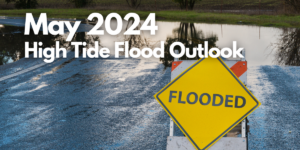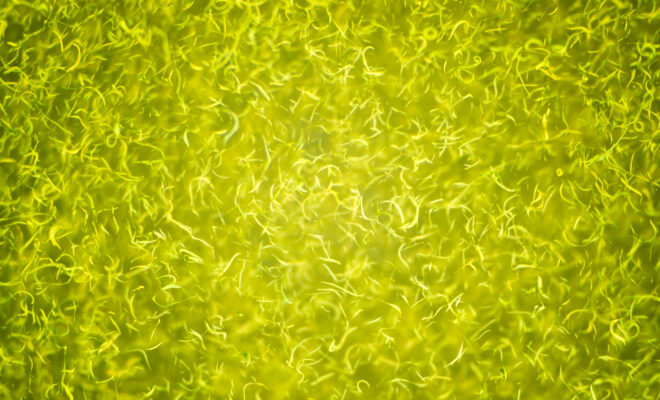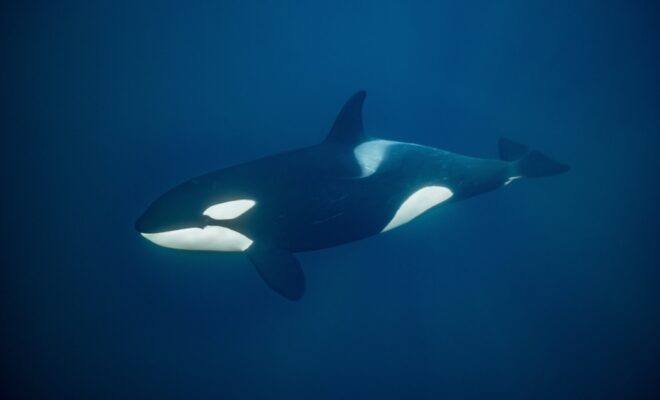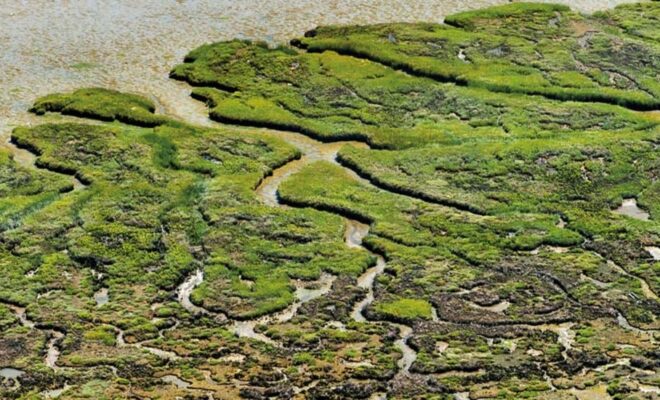Boating, Fishing, and Travel Information for Chicago, IL
Chicago is located in northeastern Illinois on the southwestern shores of freshwater Lake Michigan. It is the principal city in the Chicago metropolitan area, situated in both the Midwestern United States and the Great Lakes region. The city rests on a continental divide at the site of the Chicago Portage, connecting the Mississippi River and the Great Lakes watersheds. In addition to it lying beside Lake Michigan, two rivers—the Chicago River in downtown and the Calumet River in the industrial far South Side—flow either entirely or partially through the city. Chicago’s history and economy are closely tied to its proximity to Lake Michigan. While the Chicago River historically handled much of the region’s waterborne cargo, today’s huge lake freighters use the city’s Lake Calumet Harbor on the South Side.
See our weather radar, buoy data, marine forecast, and current weather for Chicago, IL.
Things to do in Chicago
Navy Pier
A 3,300-foot-long (1,010 m) pier on the shoreline of Lake Michigan, located in the Streeterville neighborhood of the Near North Side community area in Chicago, Illinois, United States. Navy Pier encompasses over 50 acres (20 ha) of parks, gardens, shops, restaurants, family attractions and exhibition facilities and is one of the top destinations in the Midwestern United States, drawing nearly two million visitors annually. Find out more here.
Lincoln Park
Lincoln Park totals 1,188.62 acres and it lies along the lakefront from Ohio Street Beach in the Streeterville neighborhood, northward to Ardmore Avenue in Edgewater. The section of Lincoln Park adjacent to the Lincoln Park neighborhood contains the Lincoln Park Zoo, Lincoln Park Conservatory, Theatre on the Lake, a rowing canal, the Chicago History Museum, the Peggy Notebaert Nature Museum, the Alfred Caldwell Lily Pool, the North Pond Nature Sanctuary, Lincoln Park Archery Range (used by Lincoln Park Archery Club and North Side Archery Club), North Avenue Beach and Oak Street Beach, numerous playing fields, a very prominent statue of General Grant as well as, a famous statue of Abraham Lincoln and many other statues. Find out more here.
North Avenue Beach
One of Chicago’s most popular beaches, the beach features a unique and popular beach house that contains 22,000 square feet of space that features something for everyone and is permanently docked along this popular beach. Find out more here.
Helpful resources for Chicago
- Chicago Harbors – Info on all things boating in Chicago
- Official Website of the Chicago Park District
- United States Coast Guard Auxiliary
This article uses material from the Wikipedia article: https://en.wikipedia.org/wiki/Chicago which is released under the Creative Commons Attribution-Share-Alike License 3.0
Boating in Chicago, IL Map View
Chicago Harbor, on the southwest shore of Lake Michigan 11 miles north of Calumet Harbor, serves the city of Chicago, IL, and along with Calumet Harbor forms one of the largest inland ports in the world. The harbor comprises an outer harbor with outer and inner basins and an inner harbor formed by the Chicago River and its branches. While there is some deep-draft traffic in the harbor, barge traffic from the Mississippi River via the Illinois Waterway constitutes the major use of Chicago Harbor. The major commodities handled at the deep-draft facilities in the harbor are general cargo, newsprint, salt and cement.
Prominent features:
The skyline of Chicago is prominent in general, and its three tallest buildings are conspicuous. The 1,450-foot Willis Tower, 1.3 miles southwest of the river mouth, is reported to be the tallest building in North America. Its top is usually obscured by any fog or inclement weather. The white 1,136-foot Aon Center building is 0.5 mile southwest of the river mouth. The dark brown trapezoidal 1,127-foot John Hancock Center 0.9 mile northwest of the river mouth has two prominent lighted towers on its roof.
Chicago Harbor Light (41°53’22″N., 87°35’26″W.), 82 feet above the water, is shown from a white conical tower on the south end of the breakwater on the north side of the entrance channel. A sound signal at the light is operated by keying the microphone five times on VHFFM channel 83A.
Channels:
The harbor consists of an outer harbor of refuge protected by breakwaters on the northeast and east sides and an inner basin at the natural mouth of the Chicago River. The inner basin is protected by breakwaters and bulkheads. The outer harbor is entered from Lake Michigan through a dredged entrance channel leading west between the northeast and east breakwaters; the ends of the breakwaters are marked by lights. The outer harbor affords access to the municipal pier on the west side of the harbor and to the entrance channel to the inner basin. A 400-foot-wide breakwater gap at the north end of the outer harbor is marked by lights. The end of the breakwater on the east side of the gap is partially submerged. Caution should be exercised when transiting the gap.
The inner basin, on the south side of the mouth of Chicago River, is entered from the west side of the outer harbor through the Chicago Lock. The southeast guide wall of the lock is marked at the outer end by a light. The inner basin and the river may only be entered through the lock. The dredged river entrance channel extends from the lock across the north side of the inner basin through the mouth of the river upstream to Rush Street.
Depths in the inner basin and river entrance shoreward of the Chicago Lock are referred to normal pool level, which is 0.6 foot below Low Water Datum, the plane of reference used in the outer harbor and elsewhere on Lake Michigan.
Navigators are cautioned against navigating outside the channel limits in the vicinity of structures protected by stone riprap.
Ogden Slip, at the north end of the inner basin, is north of and parallel to the mouth of the Chicago River. The slip extends about 0.4 mile into the shoreline and in 1977 had a centerline controlling depth of 16 feet except for shoaling at the west end.
From its mouth, the Chicago River leads west for 1.3 miles to the junction of North Branch and South Branch. From the junction, North Branch leads north-northwest for 1 mile to the junction with North Branch Canal, thence these two channels continue north-northwest, separated by Goose Island, and rejoin at a turning basin at North Avenue. South Branch extends 4 miles south and southwest to the junction with South Fork and continues southwest for 0.8 mile to the Chicago Sanitary and Ship Canal. South Fork extends 1.3 miles south from South Branch.
A federal project provides for dredged channels in the Chicago River from its mouth to the junction with the North and South Branches, thence in North Branch and North Branch Canal to the turning basin at North Avenue.
North Shore Channel joins North Branch about 5.5 miles above the turning basin at North Avenue and extends about 8 miles north to the harbor at Wilmette, IL. The controlling depth in the channel is about 7 feet. A lock that blocks the channel at Wilmette is inoperable and is closed to all navigation.
Measured course–A 121°–301° measured course, 5,307 feet long, is on the lakeward side of the breakwater on the northeast side of the outer harbor. The markers are one vertical white stripe between two vertical red stripes, painted on the breakwater.
Lock:
The Chicago Lock, operated by the U.S. Army Corps of Engineers, at the mouth of the Chicago River was constructed to prevent the flow of the river into the lake. The lock is 600 feet long and 80 feet wide with a depth of 23 feet over the sill. The zero of the water level gauges set in the lock walls is at Chicago City Datum, which is 1.4 feet above Low Water Datum. A sound amplifier system is maintained by the lock operators for communication with vessel operators. Vessels within the lock normally tie up to the south lock wall. However, under adverse weather conditions, such as strong south winds, vessels may wish to use the north lock wall.
Ice may, at times, prevent full opening of the sector gates at the Chicago Lock. When the gates cannot be fully opened (due to ice build-up in the recessed areas), they are vulnerable to excessive damage from vessels entering or departing the lock chamber. When barges have ice build-up on their sides and considerable ice flows are present in the channel, the width of the tows may be restricted by the lockmaster to facilitate passage of the tow into the lock chamber and to minimize lock structural damage from ice.
Due to the lock at the mouth of the Chicago River and other projects by the Chicago Sanitary District, the flow of the river has been reversed and is now away from the lake, except in North Branch.
Anchorages:
General and small-craft anchorages are in Chicago outer harbor and in the small-craft basin at the southwest corner of the outer harbor
Danger:
A rock-filled pile pier 3 to 6 feet high, marked at the outer end by a private light, extends 0.5 mile east from shore into the outer harbor, parallel to and 400 feet north of the Chicago River entrance lock.
Regulated Navigation Area:
A safety zone has been established from Lake Michigan to Brandon Road Lock and Dam, including Des Plaines River, Chicago Sanitary and Ship Canal, Chicago River and Calumet-Saganashkee Channel.
A safety zone is in the outer harbor just south of the Navy Pier.
A regulated navigation area has been established in the Chicago River from the Chicago Lock to about Lacon, IL, on the Illinois River (Mile 187.2), and all the waters of the Chicago Sanitary and Ship Canal, located between mile 295.5 and mile 297.2.
A security zone surrounds Four Mile Crib, about 2.6 miles east-southeast of Chicago Harbor Light. The crib is marked by a private light with a private sound signal.
Bridges:
The city has instituted a system of roving bridgetenders to operate or to assist the resident tender to operate certain bridges across the Chicago River, the North Branch and the South Branch. The bridges affected are annotated in the tables of bridges, following. At least 30 minutes advance notice is required for the first bridge through which a vessel intends to pass. Thence, telephone advice of vessel movements will be passed from bridge to bridge. Notice may be given to the Bridge Desk of the Chicago Department of Transportation, telephone 312–744–4200/4201.
The city of Chicago is attempting to minimize noise in the area bounded by the Michigan Avenue bridge on the east, the Chicago Avenue bridge on the north and the Roosevelt Road bridge on the south. Pilots of vessels should give the customary whistle signal for the first bridge approached within this area and, when in the draw of the bridge, should inform the bridgetender of their destination. The bridgetenders will then telephone ahead for the necessary bridge openings. Pilots are asked not to signal for other bridge openings in this area unless prompt service is not provided.
Submarine tunnels—Numerous submarine tunnels cross Chicago River and its branches.
Towage:
Tugs for the Chicago area are available from Calumet (South Chicago) Harbor.
Quarantine, customs, immigration and agricultural quarantine:
Quarantine is enforced in accordance with the regulations of the U.S. Public Health Service.
Chicago is a customs port of entry.
Wharves:
The principal use of Chicago Harbor is by barges that reach the port from the Mississippi River via the Illinois Waterway. There are several facilities for barges in the harbor.
Morton Salt, Elston Avenue Wharf: west side of North Branch, 0.25 mile below North Avenue turning basin; 532-foot face; 14 to 18 feet alongside; deck height, 8 to 12 feet; warehouse storage for 25,000 tons of salt; receipt of salt; owned and operated by Morton Salt Co.
The Jardine Water Filtration Plant is on a bulkheaded fill area just north of Navy Pier. The outer ends of the bulkheads are marked by private lights. A security zone has been established in the waters along the north side of the water filtration plant.
An area of fish nets, marked by private lighted buoys and floodlighted, adjoins the north bulkhead of the filtration plant.
Supplies:
All types of marine supplies and provisions are available at Calumet Harbor. Tank vessels provide bunker fuel to vessels at their berths.
Repairs:
There are no facilities available for repairing, dry-docking or hauling out large, deep-draft vessels in Chicago Harbor. The nearest such facilities are located at Sturgeon Bay, WI.
Small-craft facilities:
A small-craft basin, protected by breakwaters, is entered from eastward through an opening in the breakwaters about 0.9 mile south of the natural entrance of the Chicago River. The entrance to the basin is marked by lights. Gasoline, diesel fuel, water, ice and launching ramps are available.
Information from Coast Pilot: https://nauticalcharts.noaa.gov/publications/coast-pilot/files/cp6/CPB6_WEB.pdf. Chart reference: 14928.
High Tide Flooding Predictions for May 2024
By US Harbors. Coastal Flooding Outlook for May 2024 Per NOAA, mean sea level is typically higher in the late spring due to changing weather patterns and increasing water temperatures. That said, the outlook for tidal flooding this May is pretty contained, and is certainly less than we saw a… Learn More
Fishing in Chicago, IL Map View
Coastal News Updates See All
Can Green Hydrogen Production Help Bring Oceanic Dead Zones Back to Life?
4/27/2024
By Brian Owens. Green hydrogen production makes a lot of extra oxygen. Could we put it to work revitalizing the ocean? Douglas Wallace was on a research ship in the middle of Canada’s Gulf of St. Lawrence when he heard the news: Canadian Prime Minister Justin Trudeau had met with… SEE MORE
Gigantic Marine Reptile's Fossils Found by British Girl and Father
4/26/2024
By Will Dunham. April 17 (Reuters) – A fossil jawbone found by a British girl and her father on a beach in Somerset, England belongs to a gigantic marine reptile dating to 202 million years ago that appears to have been among the largest animals ever on Earth. Researchers said on Wednesday the… SEE MORE
Making a Marsh out of a Mud Pile
4/25/2024
By Erica Gies. In San Francisco Bay, scientists are looking for a better way to rebuild flagging marshland. The water in California’s San Francisco Bay could rise more than two meters by the year 2100. For the region’s tidal marshes and their inhabitants, such as the endangered Ridgway’s rail and the salt marsh… SEE MORE




